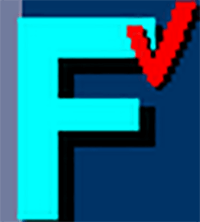Forcheck is the oldest and most comprehensive Fortran analysis tool on the market. It performs a static analysis of a Fortran program or separate Fortran program units.
Forcheck detects more anomalies in your program than most compilers do. Because it locates bugs as early in the development phase as possible, it saves you time and annoyance and helps you to produce more reliable code.
Forcheck is ideally suited to get a fast insight in programs under development, in existing and legacy programs. It composes optimal documentation of your project with cross-reference tables of each program unit, a survey of the complete program and a call-tree. Forcheck can be used as a software engineering tool in the various stages of the development process and can verify the conformance to each level of the Fortran standard. Beside the full Fortran syntax Forcheck supports many language extensions of all popular compilers.
Product Overview
- Provided with an intuitive IDE for Windows.
- Performs a full static analysis of separate program units, groups of program units, or integral Fortran programs.
- Detects more anomalies in your program than the compiler. Because it locates bugs as early in the development phase as possible, it saves you time and helps you to produce more reliable code.
- Is a reverse engineering tool to get a fast insight in existing and legacy programs.
- Composes optimal documentation: cross-reference tables for each program unit, cross-reference tables for the program, call trees, callby trees and USE trees.
- Is a software engineering tool in the various stages of the development process.
- Is suitable for very small up to extremely large projects.
- Can verify the conformance to the various levels of the Fortran standard and supports many language extensions of all popular compilers.
- FORCHECK is fully configurable. You can tune the analysis and output to your needs.
- Stores the global information of the analyzed program-units in libraries which can be referenced in subsequent FORCHECK runs to verify the consistency of all references, common-blocks and modules.
- Is very suitable as a cross-platform development tool in a multi-platform environment.
- Is available for Windows, Linux and unix. It supports most Fortran language extensions of all popular compilers.
Key Features
Verification of Syntax and Semantics
Analysis of individual program units
|
Analysis of the integral program
|
Handling of new Fortran features and conformance verification
|
Optimal analysis of legacy Fortran syntax
|
Programming Aid Tools
1. Reporting and Documenting
|
2. Tuning and Software Engineering Facilities
|
3. Integrated Development Environment
|

 Forcheck
Forcheck